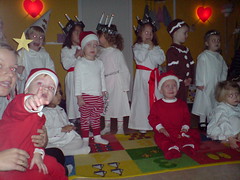Ancient Celtic Symbols: A Mysterious Mix of Traditions
Many people today have come to love ancient Celtic symbols. We see the popularity of Celtic tattoos, as well as all kinds of calendars, t-shirts, murals and other artwork depicting Celtic knotwork, crosses and mandalas. Many of these designs are striking and beautiful, but what is their origin?
The ancient Celts were a mysterious people who did not keep historical records. Their tradition was mainly an oral one, passed down from generation to generation. Most of what historians know about the Celts comes from what others, primarily the Romans, said about them. Since the Romans and Celts were not exactly friendly, to put it mildly, this makes some of their reporting possibly less than reliable. Add to this the usual problems of verifying information from over a thousand years ago, and you begin to see how murky it can get.
The Celts appear in history around 600 BC. Some of the ancient megaliths that are commonly associated with them, such as Stonehenge, were built by pre-Celtic people whose exact identity is not known. Some of the symbols associated with the Celts, such as spirals and crosses were also made by pre-Celtic peoples. The cross, in one form or another, is a very common symbol that has been used by many ancient peoples, long before Christianity started using it as their symbol.
The Celts incorporated many of these older symbols into a unique and unmistakable style of art. Perhaps the most notable Celtic motif is their distinctive knotwork, which began to appear in the early Christian era. While we cannot say for sure exactly what meaning knots had for the early Celts, the patterns certainly suggest some spiritual meanings, such as infinity, interconnectedness and perhaps the blending of
